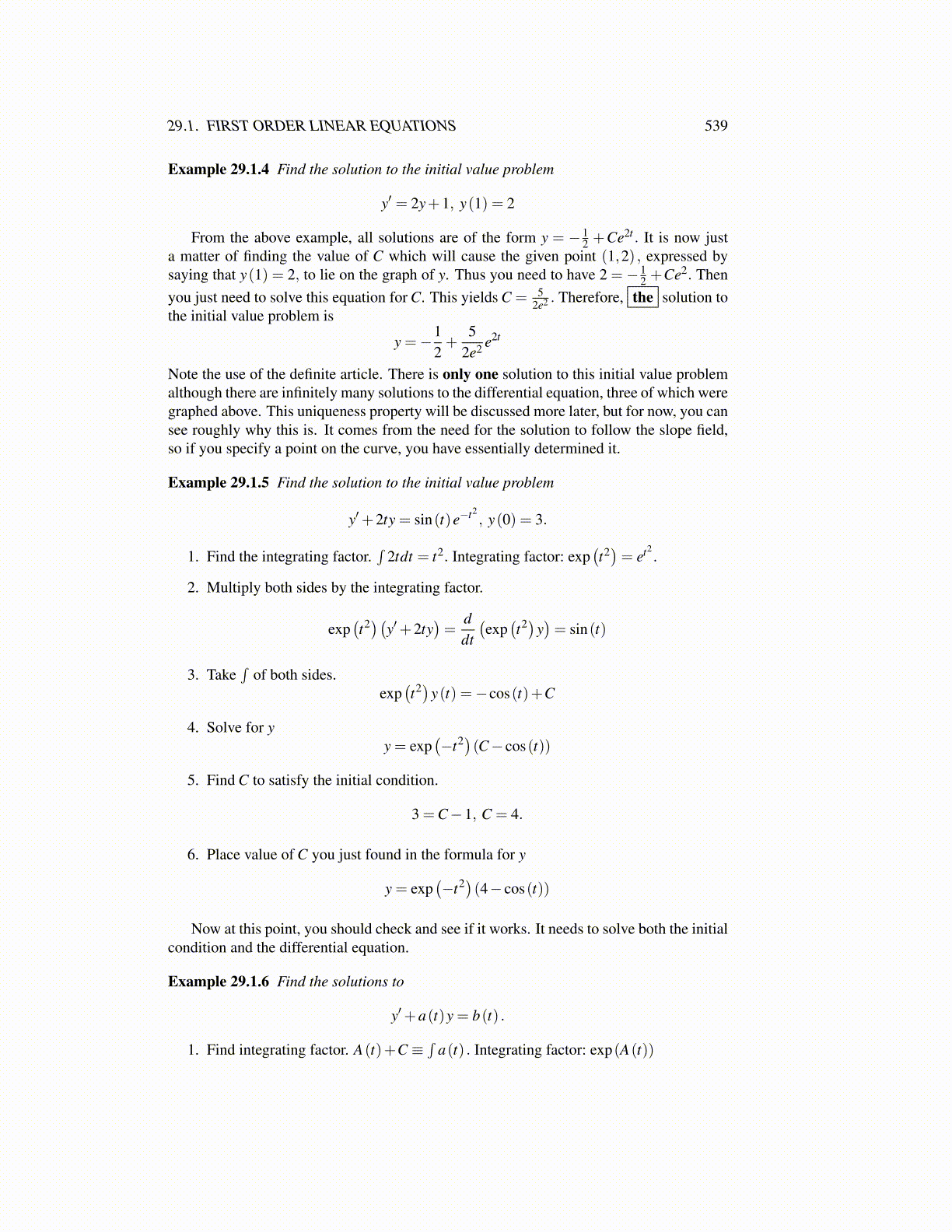
29.1. FIRST ORDER LINEAR EQUATIONS 539
Example 29.1.4 Find the solution to the initial value problem
y′ = 2y+1, y(1) = 2
From the above example, all solutions are of the form y = − 12 +Ce2t . It is now just
a matter of finding the value of C which will cause the given point (1,2) , expressed bysaying that y(1) = 2, to lie on the graph of y. Thus you need to have 2 =− 1
2 +Ce2. Thenyou just need to solve this equation for C. This yields C = 5
2e2 . Therefore, the solution tothe initial value problem is
y =−12+
52e2 e2t
Note the use of the definite article. There is only one solution to this initial value problemalthough there are infinitely many solutions to the differential equation, three of which weregraphed above. This uniqueness property will be discussed more later, but for now, you cansee roughly why this is. It comes from the need for the solution to follow the slope field,so if you specify a point on the curve, you have essentially determined it.
Example 29.1.5 Find the solution to the initial value problem
y′+2ty = sin(t)e−t2, y(0) = 3.
1. Find the integrating factor.∫
2tdt = t2. Integrating factor: exp(t2)= et2
.
2. Multiply both sides by the integrating factor.
exp(t2)(y′+2ty
)=
ddt
(exp(t2)y
)= sin(t)
3. Take∫
of both sides.exp(t2)y(t) =−cos(t)+C
4. Solve for yy = exp
(−t2)(C− cos(t))
5. Find C to satisfy the initial condition.
3 =C−1, C = 4.
6. Place value of C you just found in the formula for y
y = exp(−t2)(4− cos(t))
Now at this point, you should check and see if it works. It needs to solve both the initialcondition and the differential equation.
Example 29.1.6 Find the solutions to
y′+a(t)y = b(t) .
1. Find integrating factor. A(t)+C ≡∫
a(t) . Integrating factor: exp(A(t))